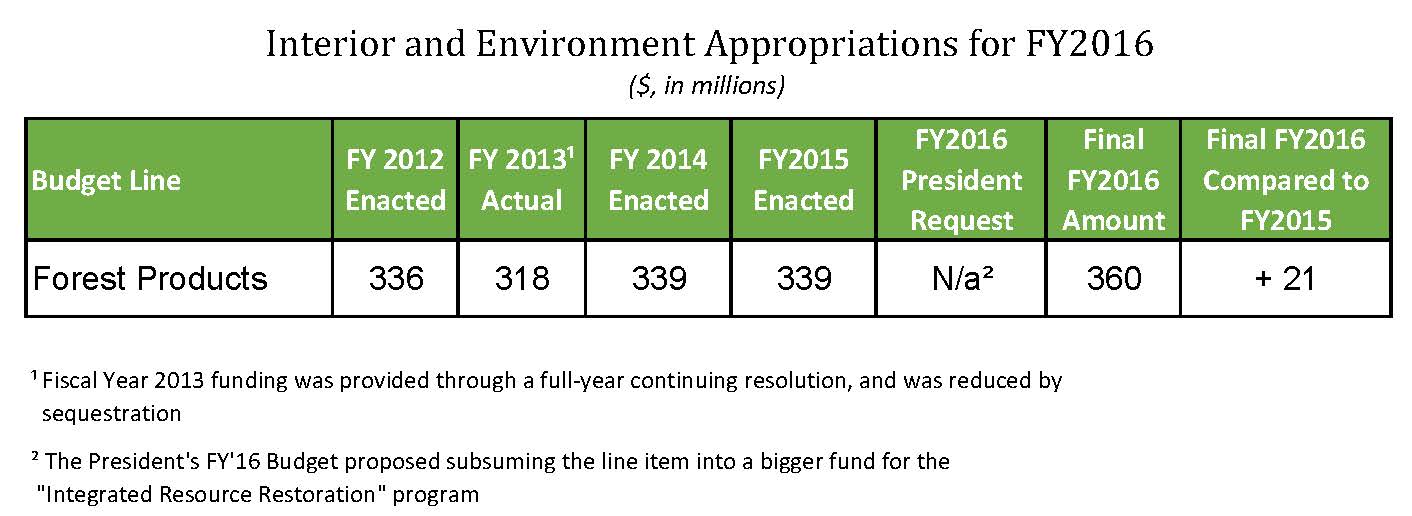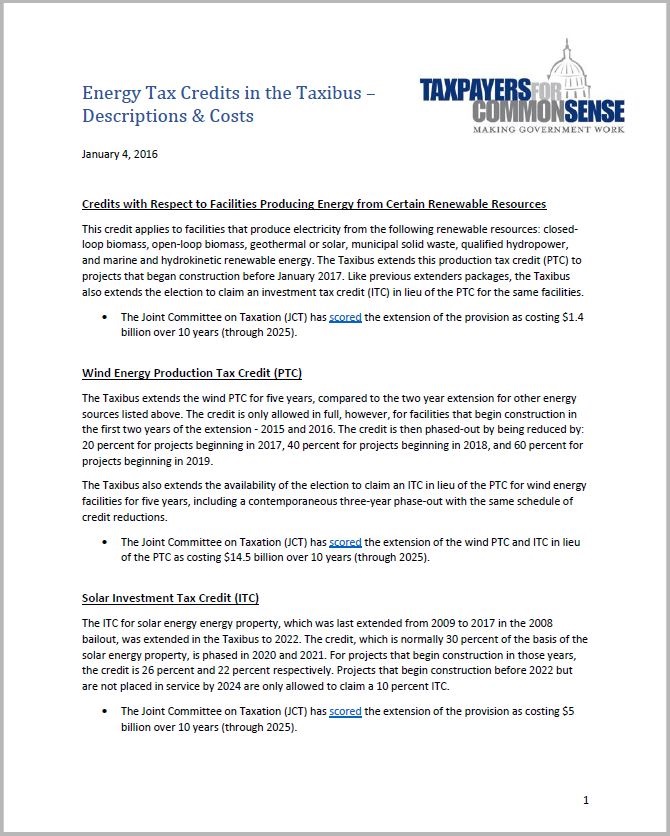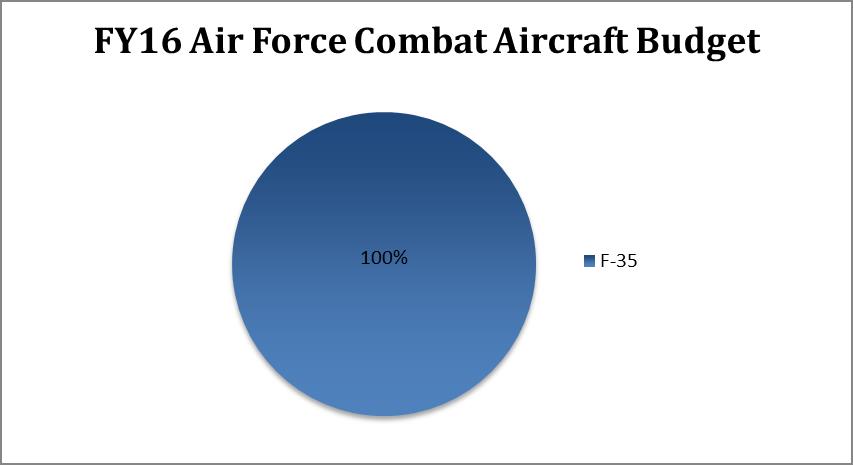FY2016 Taxibus – TCS Analysis Blog
Click the links below to jump to the different sections of our analysis of the 3,500+ page Taxibus (including explanatory language).
January 4, 2016
- 5:20pm – Energy Tax Breaks in the Taxibus
- 11:00am – More Funding for Money-Losing Timber Program
December 22, 2015
- 4:10pm – A Middling Move away from MOX
December 18, 2015
- 3:40pm – Won’t You Let Me Take You on a Sea Cruise?
- 10:15am – The 30,000 Foot View of the 3,500 Page Taxibus
December 17, 2015
- 4:45pm – Cotton Still King of Subsidies
- 2:05pm – Slush-y Funds Circa FY2016
- 1:35pm – Candy Canes for Contractors
- 12:30pm – Interior Appropriations See Increase
- 10:40am – F-35 Continues to Eat the Pentagon’s Lunch
December 16, 2015
- 4:26pm – Costly Flood Provision Recedes
- 4:15pm – Something in the stocking for oil and gas
- 4:00pm – Energy and Water Spending Gets a Bump Up
- 3:45pm – Sea-based Deterrence, Un-funded
- 2:25pm – Biofuels Budget Busters
- 12:15pm – Here’s Whatcha CAN’T do With That Money
- 11:31am – No Coal in Your Stocking this Year!
- 11:00am – TCS Statement on the Taxibus
- 9:45am – A Taxibus is Born!
December 15, 2015
- 6:05pm – It’s Tardy by Ten Weeks
January 4, 2016
5:20pm
Energy Tax Breaks in the Taxibus
Among the biggest beneficiaries of this year’s Taxibus is the energy industry. Energy interests stand to gain, in particular, from a number of provisions in the package of “tax extenders” tacked onto the omnibus spending bill. The set of extenders includes tax breaks that support electricity production from renewable sources, promote biofuel use, incentivize energy-efficient new homes, subsidize electric motorcycles purchases, and reward oil and gas refineries, among others.
Normally, Congress extends these tax breaks in short bursts (usually 1-2 years, often retroactively) instead of making them permanent. While this creates uncertainty for the businesses that receive the tax breaks, it allows Congress from to hide their long-term costs. In this year’s tax extenders legislation, however, Congress did make some of the breaks permanent, extended others for five years, and revived the rest for two years. None of the energy provisions in the package were made permanent, but the production tax credit for wind energy and investment tax credit for solar energy were notably extended for five years. In total, the energy extenders listed below, along with the new extender for oil refineries discussed here, will cost $27 billion, not including out years.
A list of most of the energy tax extenders in the Taxibus, along with a description and cost estimate of each, is available below.
Energy Tax Credits in the Taxibus – Descriptions & Costs
11:00am
More Funding for Money-Losing Timber Program
The Forest Service’s Forest Products budget line, the majority of which is spent to administer timber sales in national forests, is funded at $360 million. That represents a sizeable increase over what had been a flat funding level for the program at $336-$339 million for FY 2012-2015 (excluding FY2013 as an anomaly) – see below. The higher funding level is equal to the amount recommended by the Senate Appropriations Committee, and consistent with the increase for the program in the House version of the bill, which recommended $355 million. The report language accompanying the omnibus doesn’t offer a reason for the bump in funding, but both the House and Senate explicitly noted their recommended funding increase was meant to boost timber sales.
That could be bad news – the Forest Service’s timber program is a big money-loser for taxpayers because timber sales actually cost more to administer than they earn in revenue. The program lost $349 million in 2014 alone, and $2.81 billion from 2008-2014. More timber sales without reform will mean more losses for taxpayers.

December 22, 2015
4:10pm
A Middling Move away from MOX
Funding for the Mixed Oxide (MOX) Fuel Fabrication Facility remained flat at $345 million, matching both the Administration’s request and the House and Senate Appropriations Committee versions of the bill. The MOX project is supposed to remove impurities from plutonium feedstock obtained from nuclear weapon pits, form the plutonium into mixed oxide (MOX) fuel pellets, and fabricate the pellets for use in a commercial reactor. But since the project began, MOX costs have increased dramatically.
In last year’s FY2015 CROmnibus, Congress rejected the Administration’s proposal to put the project in “cold standby,” and asked the National Nuclear Security Administration (NNSA) to report on the life cycle costs of MOX and one alternative – the “dilute and dispose” option. Both the House and Senate versions of this year’s bill included language requiring more information about the project and alternatives, and allotted $345 million to continuing MOX construction. Instead, the omnibus devotes $340 million to construction, and allocates the remaining $5 million for
…advance planning, to resolve regulatory and other issues, to complete conceptual design activities for the dilute and dispose alternative.
Though it is careful to stipulate that funds may not be used to begin diluting any plutonium, the bill seems to take the first step toward the “dilute and dispose” alternative to MOX. Fully funding MOX while planning for its demise is poor policy and demonstrates an unwillingness to make the tough decisions necessary for prioritizing investments. We will wait to see how the alternate approach would be financed, but any move away from MOX is a move toward fiscal sanity.
December 18, 2015
3:40pm
Won’t You Let Me Take You on a Sea Cruise?
As always, it’s a good time to be in military shipbuilding. Because Congress loves to buy shiny (actually, not shiny, more “haze gray and underway”) things for the Navy. And while we agree the U.S. Navy needs to be robust, we part company with the Congress when it tries to buy more ships, sooner than the Navy is requesting them. For instance:
The DDG-51, Arleigh Burke class of Destroyers was already in the Navy’s budget request to the tune of slightly more than $3 billion. Not enough, and not fast enough, says the Congress. The final bill includes a round $1 billion extra for “incremental funding for one ship.”
Afloat Forward Staging Base was not in the Navy’s budget request, but Congress is adding one ship for an additional $635 million.
Replacing the Landing Helicopter Assault (LHA) ships received a program increase of $199 million to accelerate advance procurement.
LX(R) (Advance Procurement) was accelerated – and Congress really put their foot on the accelerator by going from 0 to $250 million in less than the time it took us to type this sentence. (And we’re speedy typists!)
Joint High Speed Vessel also went from 0 to $225 million, for one ship, in the blink of an eye.
The Fleet Tug (T-ATS(X)) also received money to accelerate from nothing in the Navy’s request to $75 million.
Finally, the Landing Craft Utility was “accelerated” from 0 in the request to $34 million.
And while a few of the shipbuilding programs took cuts such as $4.2 million decrease for “other electronics cost growth,” for the most part shipbuilding was told “Weigh your anchors. Full speed ahead!” Adding up all the increases there is a total of slightly more than $2.4 billion added to the shipbuilding accounts.
Look out, Navy. That kind of acceleration can give you whiplash.
10:15am
The 30,000 Foot View of the 3,500 Page Taxibus
At TCS we have to admit, we enjoy the number-crunching mania that comes with the (seemingly) annual massive year-end spending bill. But the font of available information about which industry got what tax break, and which Member of Congress snuck what pet project in can obscure the big numbers that matter. We have a 2,209 page omnibus with 1,365 pages of explanatory text, and a 233 page tax package attached (3,607 pages all together). That makes it easy to miss the 17 pages published by the Joint Committee on Taxation (JCT) and Congressional Budget Office (CBO) that tell us how much it will all cost. Except we don’t miss it. Here’s a quick break down on what’s reported on those pages.
In the omnibus spending portion of the package – Divisions A-L (A, B, C, D, E, F, G, H, I, J, K, L here) – Congress appropriates $1.067 trillion subject to discretionary spending caps, and another $83 billion for which Congress is allowed to raise those caps (mostly OCO), bringing the total to $1.15 trillion. That amount combined with mandatory spending outstrips federal revenues and creates a deficit, but sadly it’s a deficit we’ve been expecting. The CBO estimated in August that the deficit would be $414 billion in FY2016 – the low point on its path to increasing to $1.01 trillion by FY2025. That trend line was already looking bleak, and what Congress chose to cram into the Taxibus won’t help.
As authorizing measures just hitching a ride on the omnibus, Divisions M and N have a negligible effect on the deficit. On balance, Division O won’t either, reducing it by $75 million. Division P, however, is a grab bag of tax breaks for Congress’ favorite interest groups that according to the CBO/JCT will raise the deficit by $57.7 billion over the next decade. Here’s the breakdown:
- $19.8 billion comes from delaying the excise tax on high-premium health insurance plans, or “Cadillac plans,” and allowing businesses to deduct the tax as a business expense
- $12.2 billion in revenue is lost by putting a one year moratorium on the excise tax imposed on health insurers for 2017
- $14.5 billion is lost by extending tax credits for facilities generating electricity from wind power for five years
- $9.3 billion is given out in tax credits for solar-powered electricity plants and residential solar panels
- $1.9 billion is blown on a new carve out for independent oil refiners we explained earlier
And then there’s division Q, the second bill in the legislative package that renews some of the “temporary” tax breaks known as tax extenders for two years, some for five years, and some permanently, at a cost of $621.95 billion in the budget window. Part (most) of the reason extenders are only “extended” is the cost of offsetting them. Generally, extenders are not offset and, to keep down the cost, the extensions are only for a year or two. Part of the rationale is that these issues will be dealt with in an eventual comprehensive tax reform bill. This bill ignores that nicety and just busts through the front door with tax breaks Republicans and Democrats will like.
That brings the grand total tab of the Taxibus, which Congress doesn’t even attempt to defray, to $679.6 billion. The decision is costly. Passage of the package increases the sum of projected deficits over the next decade by nearly 10 percent. While that cost is very real, the worst effect of the Taxibus might be an intangible one. The Taxibus is a blatant renunciation of the fiscal responsibility that the Budget Control Act (BCA) tried to impose because increased deficits, whether caused by increased spending or reduction of revenue through tax cuts, add to the national debt. Remember, the fight that led to the BCA was precipitated by a fight over increasing the debt limit. Go figure.
December 17, 2015
4:45pm
Cotton Still King of Subsidies
Advocates of increasing spending on agriculture special interests gained a win in the Taxibus. Through a bit of confusing text, Section 740 of Division A (Agriculture Appropriations) resuscitates a long-dormant taxpayer subsidy known as marketing loan commodity certificates and directs the program be applied “under the same terms and conditions as were in effect for the 2008 crop year.” This is a boon for cotton farmers who’ve been pushing for this costly provision all year.
Under current law farmers of certain crops can chose between two types of taxpayer assistance in marketing their crops. “Marketing Assistance Loans (MAL)” allow farmers to use their crop as collateral for cash while they store their crop for sale at a later date when prices, presumably, will be higher. If actual market prices end up lower than the prices assumed in the loan, they can forfeit their crop to the government as payment, or keep their crop and repay the loan at a lower rate. The portion of the loan they don’t pay back is known as a Marketing Loan Gain (MLG) and counts as a government payment. Alternatively farmers can sign up for the Loan Deficiency Payment (LDP) program. Instead of a loan, the LDP is essentially a promise from the government that if prices are low, farmers will receive a payment roughly equivalent to the MLG they would have received if they took out a loan. The 2014 farm bill makes all payments from shallow loss, price guarantee, or MLG and LDP payments subject to a $125,000 per person limit.
 |
| Photo credit: Mike Beauregard via Flickr |
The Taxibus revives a third option, known as commodity certificates, where farmers with a potential MLG can instead purchase “certificates” that are immediately traded in to pay off their loan. The advantage to these certificates, as “in effect for the 2008 crop year” is that they don’t count toward government payment limits.
This re-opening of the 2014 farm bill to end-run payment limits is occurring at the same time the cotton industry is pushing USDA to declare cottonseed oil as an “other oilseed” in order to open the flood gates for payments under the new shallow loss programs. Cotton was explicitly excluded from these new programs having been provided their own shallow loss program, STAX. The “problem” with STAX is that it required farmers to buy insurance for their shallow loss. While taxpayers picked up 80% of the bill, under ARC/PLC we pay for 100%, so few cotton farmers participated.
House Agriculture Appropriations Subcommittee Chairman Robert Aderholt (R-AL) and Senate Appropriations Committee Chairman Thad Cochran (R-MS) both just so happen to represent cotton producing states. Guess it pays to be king.
2:05pm
Slush-y Funds Circa FY2016
Since the earmark moratorium, Congress has desperately tried to get funds to projects they routinely pumped full of pork barrel funding. The Army Corps of Engineers projects are the earliest form of parochial spending, dating back two centuries. After the earmark moratorium, Congress created slush-y funds – accounts for areas of the Corps’ work that hadn’t gotten any, or enough funding for Congress’s taste. These range from regular accounts like General Construction, Navigation to areas that successive Administrations – Republican and Democrat – have opposed, like Environmental Infrastructure (a wastewater and clean water project political fund for activities outside the Corps’ purview).
Congress appropriates funds into these various accounts, and then pursues the Corps to get their projects funded. (We’d like to tell you more about this but after three years and pestering, the Corps responded to our Freedom of Information Act request (FOIA) telling us that they don’t track Congressional correspondence. You would have thought they had a bridge in Brooklyn to sell us. A separate conversation with a senior Corps official indicated that they do track Congressional correspondence (shocker!) and we are following up. Here’s the tale of the tape for the FY16 Slush-y funds.
The total number of slush-y fund was reduced by one yet the price tag greatly increases. Slush-y funds for Investigations of Small, Remote, or Subsistence Navigation and Hydropower Construction were swapped for an Operations & Maintenance fund directed at “Donor and Energy Transfer Ports” bringing the total number to 25. Interestingly the Omnibus includes eight slush-y funds that were not included in the House-passed version of the Energy and Water Appropriation (highlighted in the chart). The never before seen “Donor and Energy Transfer Ports” slush-y funds is a baby of Sens. Vitter (R-LA) and Boxer (D-CA) who as Chairman and Ranking member of the Environment and Public Works committee got the term into the WRrDA bill that authorized Corps projects. Not surprisingly, the represent energy and donor ports respectively. The donor ports are Los Angeles, Long Beach, and Seattle/Tacoma. There are an estimated dozen energy ports in five states, notably including New Orleans.
Congress increased the price tag of the, now 25, slush-y funds to $1.312 billion. This is a 30% increase in the dollar amount from FY2015 and the second consecutive year slush-y funds have amounted to more than $1 billion. And they are increasingly accounting for a greater portion of the overall Appropriations. In the Construction account, slush-y funds consume 40% of the total appropriation (up from 1/3 last year).
1:35pm
Candy Canes for Contractors
Both to enlighten others and amuse ourselves, we started a new tradition at TCS with the CROmnibus last year. We got out the old magnifying glass and looked at each and every funding table in the Pentagon portion of the final spending legislation. We were looking for the telltale “0” in the column marked “FY 2016 Request.”
Because a zero in the request column means these are programs the Pentagon never asked for, didn’t need this year at all. This isn’t Congress increasing a line item by 10% or 20%. This is Congress telling the Pentagon to buy something (or research something, or whatever) that they didn’t see fit to put into the Pentagon’s $534 billion request at the beginning of the year. This year’s list, see below, is more than $4.5 billion.
We call this our “Candy Canes for Contractors” list, but it could also be “Stocking Stuffers for Lobbyists.” Call it what you will; it’s about $4.5 billion the Pentagon never planned on spending.
12:30pm
Interior Appropriations See Increase
The Taxibus increases Interior and Environment Appropriations for fiscal year 2016 by over $2 billion from 2015 levels and decreases funding levels by $1.1 billion from the President’s request – for a total of $32.2 billion in discretionary budget authority.
The Department of Interior (DOI) receives $12.016 billion, $70 million less than the budget request but nearly $2 billion more than last year’s levels.
The Bureau of Land Management (BLM) receives $1.236 billion, almost $6 million more than the budget request, and $25 million more than 2015 levels.
The Environmental Protection Agency (EPA) receives $8.140 billion, the same as the fiscal year 2015 level and $451.8 million less than the budget request.
The Forest Service (USFS) gets $5.664 billion in the bill, $608 million more than last year, and $116 million than the budget request.
.jpg)
10:40am
F-35 Continues to Eat the Pentagon’s Lunch
The wholly unaffordable F-35 continues on its path, consuming large portions of the Pentagon budget as it goes. Looking just at the cost of procuring airframes (not the added costs like continuing research and development or modifying the aircraft already in the inventory) the Pentagon was given $8.3 billion to purchase F-35s.
The original request, across all three military services that fly tactical aircraft, was for 57 airframes. Not enough, according to the Congress (and, apparently, the contractors.) Instead, money for 68 airframes was provided in the taxibus. (+3 for the Air Force, +2 for the Navy, and +6 for the Marines.)
And, like last year, the entire Combat Aircraft “pie” for the Air Force was devoted to the F-35. Which gives us the opportunity to give you an updated version of our favorite chart, showing that the Air Force is truly mortgaging its future on a single airframe.
December 16, 2015
4:26pm
Costly Flood Provision Recedes
The House and Senate FY2016 Department of Homeland Security spending bills contained a policy “rider” that would have blocked the implementation of Executive Order 13690 that established a Federal Flood Risk Management Standard. TCS President Ryan Alexander wrote about this in a summer op-ed in US News. Essentially the EO stipulated that any federal investment (e.g. federal building, disaster payment to rebuild a hospital) would have to be constructed at least two higher than base flood elevation (100-year floodplain or the area that has a one percent chance of flooding in any given year). As Ryan wrote in June:
“Like many federal actions (and executive orders in particular) there has been a lot of hullaballoo and misinformation out there. But from my perspective, federal taxpayers have a right to be sure that their tax dollars are going to be invested wisely and that means not building in a floodplain where there’s a 1 percent chance of flooding every single year. If people or towns don’t want to follow those rules, there’s a simple solution: Don’t take the cash. But in reality, many communities and states already have standards such as this on the books. Maybe that’s because they make sense.”
This time common sense did prevail. The rider (Section 750 of the Energy and Water Division D of the taxibus) was adjusted so that the EO can be implemented with reasonable directions. The bill language actually improved and targeted the policy. A Congress-Administration tag team that will save taxpayers money!
4:15pm
Something in the stocking for oil and gas
As part of the deal to lift the oil export ban there are a few gifts in the “taxibus” to help refiners. Like stuffing one last gift into a Christmas stocking, Congress put a provision in the very last section of the omnibus portion of the package (on pages 2,008-2,009 of 2,009) that will allow independent oil and gas refiners to increase the amount of their standard domestic manufacturing tax deduction for 2016-2021.
Thanks to a provision in the Emergency Economic Stabilization Act of 2008 (aka, TARP or the bailout), oil and gas companies have been allowed to deduct six percent of all their “oil related qualified production activities income” since 2010. That income is calculated by taking the gross receipts attributable to those activities (revenue) and subtracting the costs associated with those receipts. The new provision in the taxibus will allow independent oil and gas refiners to subtract only 25 percent of the costs they incurred transporting oil when making that calculation. That will, in effect, increase the amount of income the six percent rate may be applied to, thereby increasing the deduction, and lowering oil and gas refiners’ tax bills.
The net result is that oil and gas refiners will pay less in taxes, and the deficit will increase. Specifically, the JCT says the provision will add $1.87 billion to the deficit in fiscal years 2016-2022. Of course, that assumes that the provision will expire at the end of 2021. But as the near-annual charade of “temporarily” extending the tax extenders bears testament, once a tax break gets into the code, Congress has a very hard time letting it die. Taxpayers could be paying off this stocking stuffer for a long time.
4:00pm
Energy and Water Spending Gets a Bump Up
The Taxibus increases Energy and Water Development Appropriations for fiscal year 2016 by nearly $3 billion from 2015 levels and $1.1 billion from the President’s request for a total of $37.185 billion in discretionary budget authority.
The U.S. Army Corps of Engineers receives $5.989 billion, $1.257 billion more than the budget request, and $534.5 million more than 2015 levels.
The Department of Energy receives $29.7 billion, $1.8 billion more than the fiscal year 2015 level and $206.5 million less than the budget request.
The Department of the Interior’s Bureau of Reclamation gets $1.275 billion in the bill, $177 million more than the budget request, and $145 million than 2015 levels.
3:45pm
Sea-based Deterrence, Un-funded
 Last year, an insidious new idea wormed its way into the Pentagon policy bill: the National Sea-based Deterrence Fund. This is the strange idea that the cost of building the next ballistic missile submarine shouldn’t come from the Navy budget but some new line item in the Office of the Secretary of Defense. The “rationale” behind this is that this class of submarines is a “national asset.” As we’ve said time and time again: all weapon systems are national assets. The Army didn’t go to war with Iraq – the U.S. Government did. But no one is suggesting that tanks are national assets that should be funded in the Office of the Secretary of Defense. At least not yet!
Last year, an insidious new idea wormed its way into the Pentagon policy bill: the National Sea-based Deterrence Fund. This is the strange idea that the cost of building the next ballistic missile submarine shouldn’t come from the Navy budget but some new line item in the Office of the Secretary of Defense. The “rationale” behind this is that this class of submarines is a “national asset.” As we’ve said time and time again: all weapon systems are national assets. The Army didn’t go to war with Iraq – the U.S. Government did. But no one is suggesting that tanks are national assets that should be funded in the Office of the Secretary of Defense. At least not yet!
The House version of the Defense appropriations bill included money in this new fund. The Senate version did not. We’re happy to report the Senate stood firm and no funds are transferred to this new budget line (gimmick) in the final version of the bill.
A victory for fiscal sanity and against budget gimmicks.
2:25pm
Biofuels Budget Busters
Traditionally, tax extenders legislation hands out one or two year extensions to avoid larger budget scores, but not all provisions in this year’s Taxibus are granted a straight one-or two-year extension. As we’re learning, some are being made permanent, and others are being extended for five years. When it comes to tax breaks for biofuels, however, Congress seems to have decided to stick with the tried and true method of perennially extending the “temporary” subsidies, at great cost to taxpayers.
The Taxibus bill extends both the Biodiesel Fuels Credit and Excise Tax Credit, which supports production of biofuels from eligible feedstocks such as “virgin oils, esters derived from corn, soybeans, sunflower seeds, cottonseeds, canola, crambe, rapeseeds, safflowers, flaxseeds, rice bran, mustard seeds, and camelina, and from animal fats.” The credits allow producers to claim a tax credit of $1.00 per gallon they mix or produce, and to receive outlay payments from the Treasury if the amount of the credit exceeds their tax liabilities.
- The Joint Committee on Taxation (JCT) has scored the two-year extension of the provisions as costing $2.6 billion.
The bill also extends the Alternative Fuels and Excise Tax Credits and the Alternative Fuel Mixtures Credit, which allow producers to claim a 50 cent-per-gallon credit for alternative fuels they produce or for mixtures “containing at least 0.1% gasoline, diesel, or kerosene” through December 31st, 2016. The bill also retroactively extends both provisions for the period beginning on January 1, 2015, and ending on December 31, 2015.
- The Joint Committee on Taxation (JCT) has scored the two-year extension of the provisions as adding $918 million to the deficit.
12:15pm
 Here’s Whatcha CAN’T do With That Money
Here’s Whatcha CAN’T do With That Money
The Pentagon portion of the Taxibus for FY16 is a little more than $570 billion. So, plenty of money for the Pentagon to meet its obligations for the coming fiscal year. And like most appropriations bills, the text is rich with details and instructions on exactly how this money shall be spent.
But Congress also spills a lot of ink telling the Pentagon what they CAN’T do with that money. For instance the Pentagon is told it can’t use any of the FY16 funds to:
- Consolidate or relocate a particular type of Air Force engineering unit, called RED HORSE, outside the United States.
- Reduce or disestablish the operation of the 53rd Weather Reconnaissance Squadron of the Air Force Reserve.
- Eliminate, restructure or realign Army Contracting Command/New Jersey or make personnel reductions without first notifying Congress.
- Realign forces at Lajes Air Force Base in Portugal until the Secretary of Defense files a certain report.
- Allow any of the military flight demonstration teams (Blue Angels, Thunderbirds, etc.) to perform outside the United States if a performance within the U.S. was canceled due to insufficient funds.
- Transfer Apache helicopters from the Army National Guard to the regular Army.
-

Photo credit: darinm16 via Flickr Divest, retire, transfer or place in storage on in backup inventory status (or prepare to do any of that) any A-10 aircraft (aka, the “Warthog,” pictured at right).
- Divest or retire (or prepare to divest or retire) the KC-10 aircraft.
- Divest, retire, transfer or place in storage or backup status (or prepare to do any of that) to the EC-130H aircraft.
- PROPOSE, plan for, or execute a round of base closure. (Does that mean if the President asks for another round of base closure in the FY17 budget request, he’s in violation of the law? Is it okay if he pays for the proposal out of his own pocket?)
So, Pentagon, look for some other ways to spend your $572.7 billion.
11:31am
No Coal in Your Stocking this Year!
Details about the Pentagon portion of the “Taxibus” (get it?) are dribbling out. The elves at Taxpayers for Common Sense are sufficiently caffeinated and we’ve started reading through the 150+ pages devoted to the Department of Defense out of the 2000+ pages of the overall package of legislation.
And the first thing we looked for is the infamous “Coal to Kaiserslautern” program. This was a decades-old boondoggle to ship anthracite coal from Pennsylvania to several U.S. military bases in Germany. After we gave this ridiculous idea the “Golden Fleece,” Representatives Jared Huffman (D-CA) and Tom McClintock (R-CA) offered a successful amendment to finally strip this provision from the Pentagon spending bill. There was no similar provision in the Senate version and so, technically, this matter was “non-conferenceable” and could not appear in the compromise version of the bill.
But this isn’t our first trip to the coal mine, so we kept watch to make sure this complex and wasteful program didn’t “magically” reappear in the Taxibus. And it didn’t. Kudos to Congressmen Huffman and McClintock for killing this program.
But we’ll be watching next year, to make sure it doesn’t rise from a pile of coal ash.
11:00am
TCS Statement on the Taxibus
Below is statement by Ryan Alexander, President of Taxpayers for Common Sense, on the (belated) release of the Taxibus:
Finally! After squabbling through almost an entire quarter of fiscal year 2016, lawmakers have come up with a spending plan for the year. Of course they decided how much to spend a few months ago, this was more about what special interest provisions and programs would survive and which wouldn’t. But spending and not spending on items wasn’t enough. As if it wasn’t complicated enough, the end of the year appropriations was married with tax cut deals. Some provisions were made permanent, others got an extension. Bonus depreciation that was created to jumpstart business spending in the Great Recession was extended for five more years, there are many biofuels related extensions, so too were bailouts for racehorse and NASCAR track owners. Mass transit commuters will get the same benefits provided for parkers forever. The question is why did either get the subsidies in the first place. The legislation runs more than 2,000 pages with many more pages in explanatory materials. |
Again, we will be scouring through the Taxibus and posting what we find, so check back often.
9:45am
A Taxibus is Born!
And lo! Congress came before us and said – “Behold, unto you is born this day a …. Taxibus!”
That’s right, created and not begotten, Congress has given us a legislative behemoth – a package of both the FY16 Omnibus appropriations bill and tax extenders bill (with some provisions that are more than just extended).
After scrambling to try and release the package before midnight Tuesday – in order to permit a vote on it Thursday under the “Three Day” rule – the legislative text and explanatory language was finally made available just after 1am on Wednesday morning.
TCS staffers are already busy poring over all of the materials, and we will be updating this space regularly to tell you what stands out to us, and to pull back the curtain on any legislative chicanery.
All materials, released as two House amendments to a Senate amendment to the House Military Construction and Veterans Affairs Appropriations Bill (H.R. 2029), are available on the House Rules Committee’s site, but we’ve also uploaded them below for your convenience.
House amendment #1 to Senate amendment to H.R. 2029 (Rules Committee Print 114-39, showing the text of the Consolidated Appropriations Act, 2016)
- Explanatory Statement: Intro
- Explanatory Statement: Division A – Agriculture, Rural Development, FDA
- Explanatory Statement: Division B – Commerce, Justice, Science
- Explanatory Statement: Division C – Defense
- Explanatory Statement: Division D – Energy and Water Development
- Explanatory Statement: Division E – Financial Services
- Explanatory Statement: Division F – DHS
- Explanatory Statement: Division G – Interior
- Explanatory Statement: Division H – Labor, HHS, Education
- Explanatory Statement: Division I – Legislative
- Explanatory Statement: Division J – Military Construction, Veterans Affairs
- Explanatory Statement: Division K – State, Foreign Operations
- Explanatory Statement: Division L – Transportation, HUD
- Explanatory Statement: Divisions M-P
House amendment #2 to Senate amendment to H.R. 2029 (Rules Committee Print 114-40, showing the text of the Protecting Americans from Tax Hikes Act of 2015)
Note: Divisions C,G, and K of the Ominbus’ explanatory statement were not immediately available when the text of the legislation and other materials were posted. Divisions C and G, making appropriations for the Departments of Defense and the Interior (two traditioanlly contentious bills) were eventually posted around 11:00am. We noticed that Divsion K, explaining the appropriations for the Department of State was finally uploaded around 12:00pm.
December 15, 2015
6:05pm
It’s Tardy by Ten Weeks
Like lots of people in Washington, and beyond the Beltway, at Taxpayers for Common Sense we’re anxiously waiting to read the omnibus (or CROmnibus, or mini-bus, or midtown bus…) to fund the federal government in Fiscal Year 2016. Remember, the federal fiscal year begins on October 1st. Every year. Ten weeks later we’re still waiting for Congress to do its job and pass legislation to fund each of the federal departments.
Rumor has it we’ll see something this evening. We’re not holding our breath, but we have called out for more coffee to keep us awake as we start reading through what will certainly be a massive piece of legislation.
Keep checking back here for wonky budget analysis and interesting tidbits as we find them. And send doughnuts!
Related Posts
Most Read
Recent Content
Letter
Jun 30, 2025 | 6 min read
Stay up to date on our work.
Sign up for our newsletter.
"*" indicates required fields













